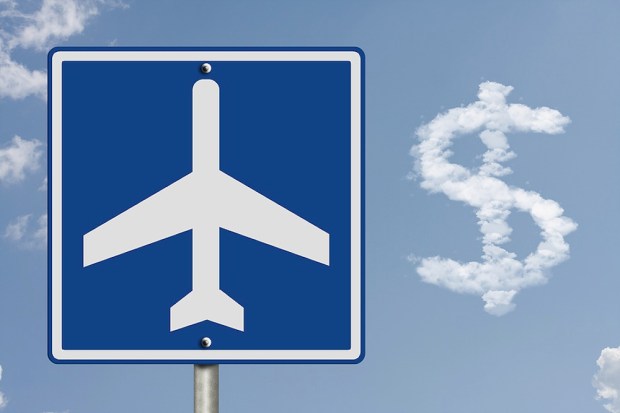While Killing The Check, Kill The (Airline) Voucher, Too

Want to make flying the friendly skies a bit friendlier? Kill the voucher: those paper-based airline “mea culpas” that get lost in the washing machine. In the latest installment of our “Kill the Check” series, Ingo Money’s Drew Edwards weighs in on how push payments can benefit the harried traveler and airlines too.
Airline travel used to be a glamorous undertaking, something for which people dressed up in their finest and during which uniformed attendants doled out multi-course meals in the sky.
Flash forward to modern air travel and witness the masses at the gate, straining to hear if flights are overbooked or canceled, wondering if the airport’s internet works or if they’ll run out of bottled water before their flights. And, once aboard, the crying baby in the seat adjacent only adds insult to injury.
In the seventh installment of the “Kill the Check” series, PYMNTS’ Karen Webster sat down with Ingo Money CEO Drew Edwards to get a sense of how airlines can use push payments to quell misfires and compensate passengers for their troubles when things go awry.
Push payments are simply debit card transactions in reverse. They use the same cards and accounts consumers already know and love to instantly deliver safe-to-spend funds. Past conversations with Webster and Edwards have focused on push payment use cases like loan proceeds, insurance payouts and corporate treasury.
Companies are rapidly turning to push payments because, as Edwards noted, “fast is not good enough, [and] instant [or] on-demand is required” for today’s consumers.
“You need to be able to decide to pay somebody and, a minute later, pay them,” he said. In addition, the consumer in question wants to know he or she can instantly access those funds.
When it comes to air travel, there are big problems to solve on both sides of the equation for both airlines and consumers, Edwards said. To illustrate the problem, he pointed to airlines’ use of hundreds of millions of dollars in vouchers to reimburse passengers when things go wrong. He likened those vouchers to hundreds of millions in promises that “consumers don’t even like, [because] they’re limited in use and, in many cases, you have to fly with the airline again in order to use them.”
From the airline’s perspective, the firm must somehow account for the vouchers, “some of which end up in the washing machine,” Edwards joked, and “will never get used.” Thus, there’s a less-than-optimal duality, evidenced by a bad consumer experience, because consumers never truly get paid back and the airline has reserved against a future claim that may never be resolved.
Now, imagine one gets bumped from his or her flight, and instead of being given a future travel voucher, the airline issues him or her refunded money on demand to a card or account of his or her choosing. Suddenly, the sting is a bit more endurable.
Nobody wants a voucher via paper, which “can be as bad as a paper check to keep up with,” according to Edwards. The same instant payment process works for lost baggage, flight delays and other poor airline experiences. These are “real-time dilemmas that the airline is trying to solve from a customer satisfaction standpoint,” he told Webster.
In explaining the mechanics of the Ingo Money process with the airlines, Edwards called out the company’s existing partnership with Wonder Technologies, wherein digital vouchers interface with the gate agents’ system. Notifications are pushed out to the recipient via text or email, and he or she then offers information as to which card(s) on which to disburse the funds.
The digital nature of push payments also helps airlines as they can better control when, where and how such monies are spent. In addition, Edwards noted, push payments are instantly reconciled with the airline’s own accounting functions as they are being used.
Paper vouchers, Edwards predicted, “will go away over the next couple of years.”
